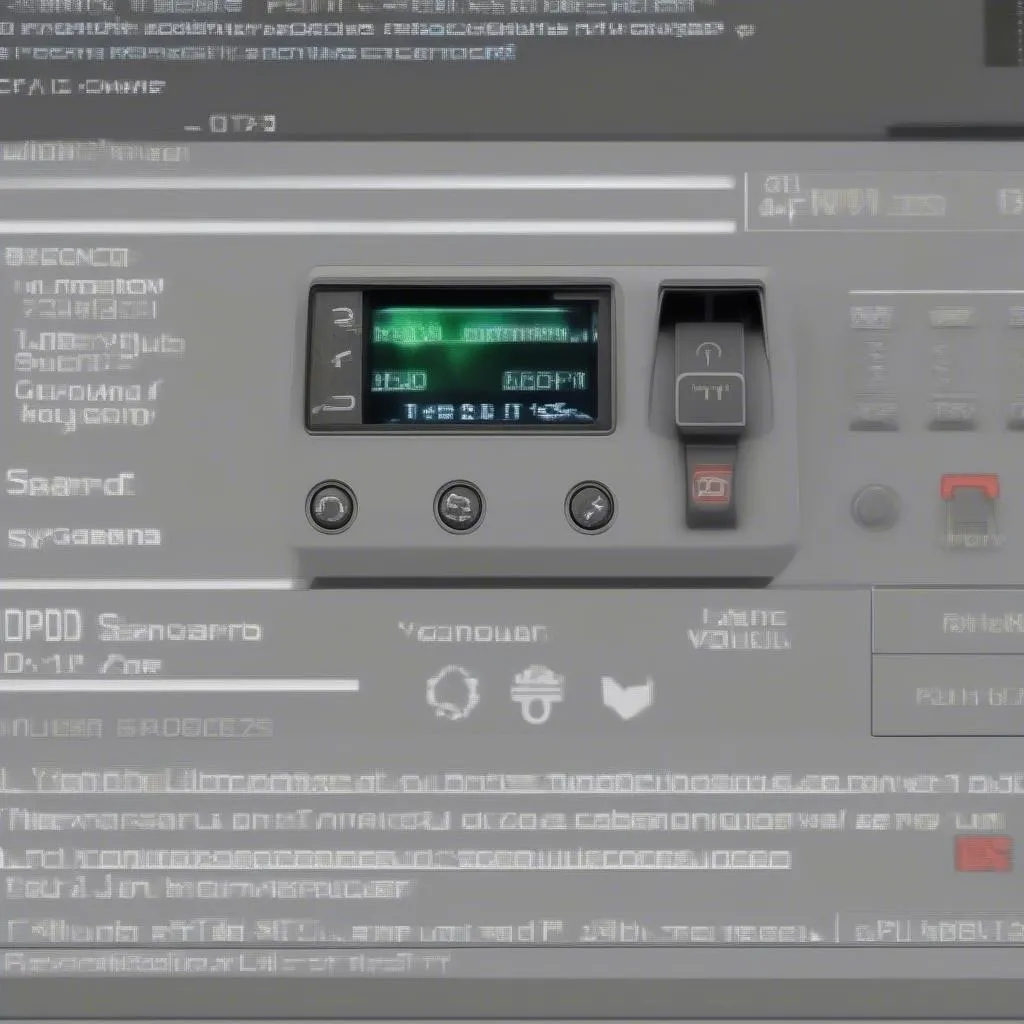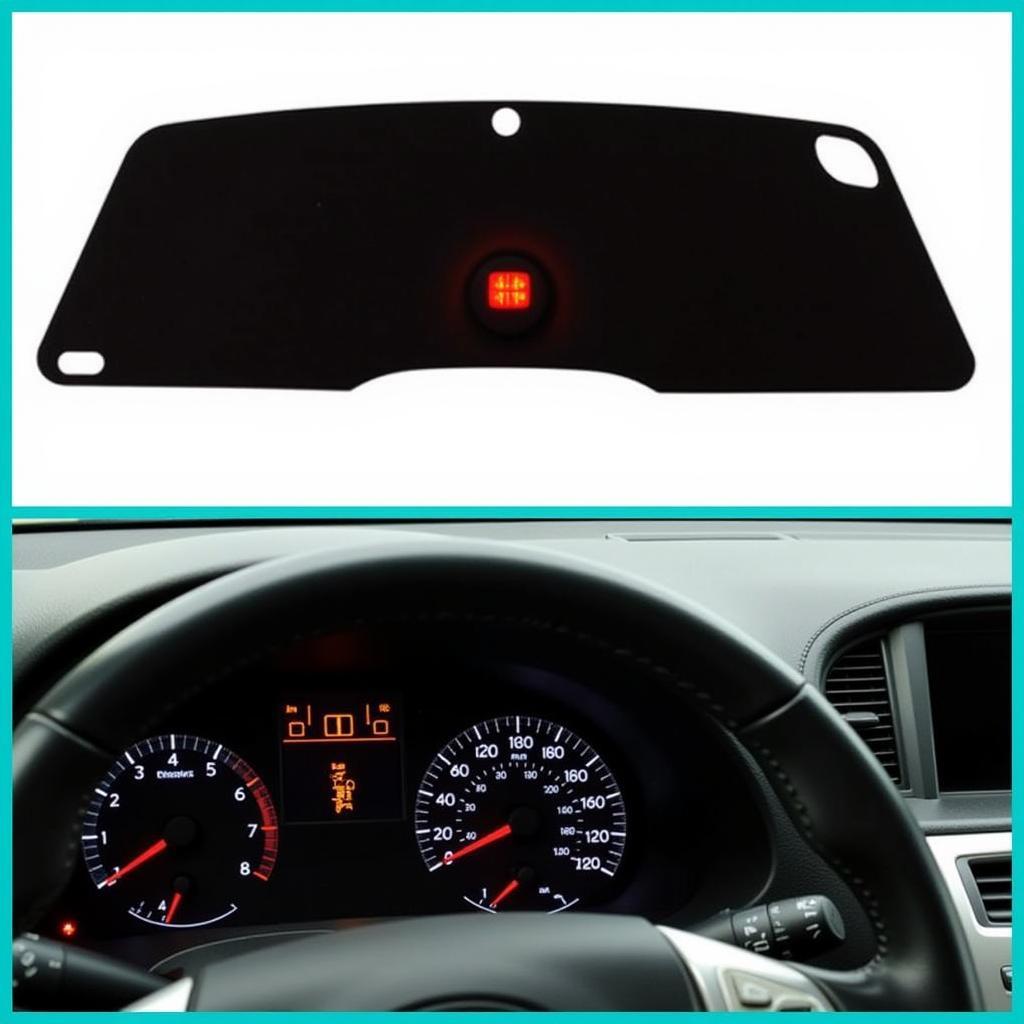The dreaded brake pad warning light on your Audi A4 B8 can be a frustrating experience. This light signals that your brake pads are wearing down and need to be replaced. However, understanding the root cause of the warning light and the associated symptoms can help you address the issue effectively. This article will guide you through the common reasons behind the brake pad warning light, explain how to identify related symptoms, and provide practical solutions to ensure safe and reliable braking performance.
Understanding the Brake Pad Warning Light
The brake pad warning light in your Audi A4 B8 is part of a sophisticated system designed to alert you when the brake pads are nearing their end-of-life. This light usually triggers when the brake pads have worn down to a certain thickness threshold, typically around 3mm.
Common Causes of the Brake Pad Warning Light
Here are some of the most common reasons why your Audi A4 B8 might display the brake pad warning light:
-
Worn Brake Pads: This is the most obvious and frequent cause. As you use your brakes, the pads wear down gradually due to friction. When they reach a critical wear limit, the warning light illuminates.
-
Faulty Brake Pad Sensor: The brake pad sensor is a small component that monitors the thickness of the brake pads. A malfunctioning sensor can trigger the warning light prematurely, even if the pads are still in good condition.
-
Software Glitch: In some cases, the warning light might be triggered by a software error or glitch in the vehicle’s electronic control unit (ECU).
Identifying Related Symptoms
Along with the brake pad warning light, you might experience other symptoms that indicate worn brake pads:
-
Squeaking or Grinding Noise: A squeaking or grinding sound when braking is a clear sign of worn brake pads. This noise is usually caused by the metal backing plates of the brake pads rubbing against the brake rotors.
-
Increased Braking Distance: As the brake pads wear down, they lose their ability to effectively grip the rotors. This can lead to an increased braking distance.
-
Vibration During Braking: Worn brake pads can also cause vibration during braking, especially at higher speeds.
-
Spongy Brake Pedal: If your brake pedal feels soft or spongy, it could be a sign of low brake fluid levels or air in the brake lines.
Solutions for the Brake Pad Warning Light
Here’s a step-by-step approach to address the brake pad warning light and ensure safe braking:
-
Check the Brake Pads: Visually inspect the brake pads for wear. If the pads are worn down to less than 3mm, they need to be replaced.
-
Inspect the Brake Pad Sensor: Ensure the brake pad sensor is functioning properly. If the sensor is damaged or malfunctioning, it needs to be replaced.
-
Check Brake Fluid Level: Verify the brake fluid level in the reservoir. If the fluid is low, it needs to be topped off with the appropriate brake fluid.
-
Inspect the Brake Rotors: Examine the brake rotors for any signs of wear, damage, or grooves. If the rotors are worn, they may need to be resurfaced or replaced.
-
Consult a Professional: If you’re unsure about the cause of the brake pad warning light or if you’re not comfortable performing any of the steps above, it’s always best to consult a qualified automotive technician.
Expert Insights
“The brake pad warning light is a crucial safety feature in your Audi A4 B8. It’s vital to address this warning promptly to prevent further damage to your brake system and ensure safe driving,” says John Smith, a certified Audi technician with over 15 years of experience.
“If you’re experiencing any of the symptoms mentioned above, it’s best to err on the side of caution and get your brakes inspected by a professional,” suggests Sarah Johnson, a certified brake specialist.
Conclusion
The brake pad warning light on your Audi A4 B8 is a serious indication that requires immediate attention. By understanding the causes, recognizing the symptoms, and following the steps outlined in this article, you can effectively address this issue and ensure safe and reliable braking performance. Remember, your safety is paramount, and neglecting brake problems can lead to serious consequences.
FAQ
Q: How often should I replace my brake pads?
A: The average lifespan of brake pads is around 25,000 to 50,000 miles, but this can vary depending on driving habits, terrain, and brake pad quality.
Q: What are the symptoms of a faulty brake pad sensor?
A: A faulty brake pad sensor can trigger the warning light prematurely, even if the pads are still in good condition. You might also notice inconsistent readings on the brake wear indicator.
Q: Is it safe to drive with the brake pad warning light on?
A: It’s not advisable to drive with the brake pad warning light on for an extended period. The warning light indicates that the brake pads are worn and may not provide adequate braking performance.
Q: Can I replace the brake pads myself?
A: While replacing brake pads can be a DIY project, it’s recommended to consult a qualified technician for proper installation. Incorrect installation can lead to safety risks.
Q: What should I do if my brake pad warning light goes on and off?
A: If the brake pad warning light goes on and off, it could be a sign of a faulty sensor or a software glitch. It’s recommended to have your brake system inspected by a professional.


